Hey all! Real Farmer Jeff here.
If you have ever bitten into a bland supermarket tomato and thought, “This doesn’t taste right,” you’re not imagining it. After years of growing tomatoes in my garden, I often find myself thinking about them during the off-season (especially when I have to settle for store-bought tomatoes instead of picking my own).


The difference between store-bought and homegrown produce goes beyond flavor. Fruits and vegetables grown at home often contain more vitamins, minerals, and antioxidants.
In this blog post, I’ll share which crops show the biggest nutritional and flavor differences including tomatoes, leafy greens, berries, carrots, bell peppers, cucumbers, melons, eggplants, and potatoes.
I’ll also explain why store-bought produce often contains fewer nutrients and less flavor, and what alternatives are available. Understanding this can help you make healthier and more informed choices whether you grow your own food or shop at the store.
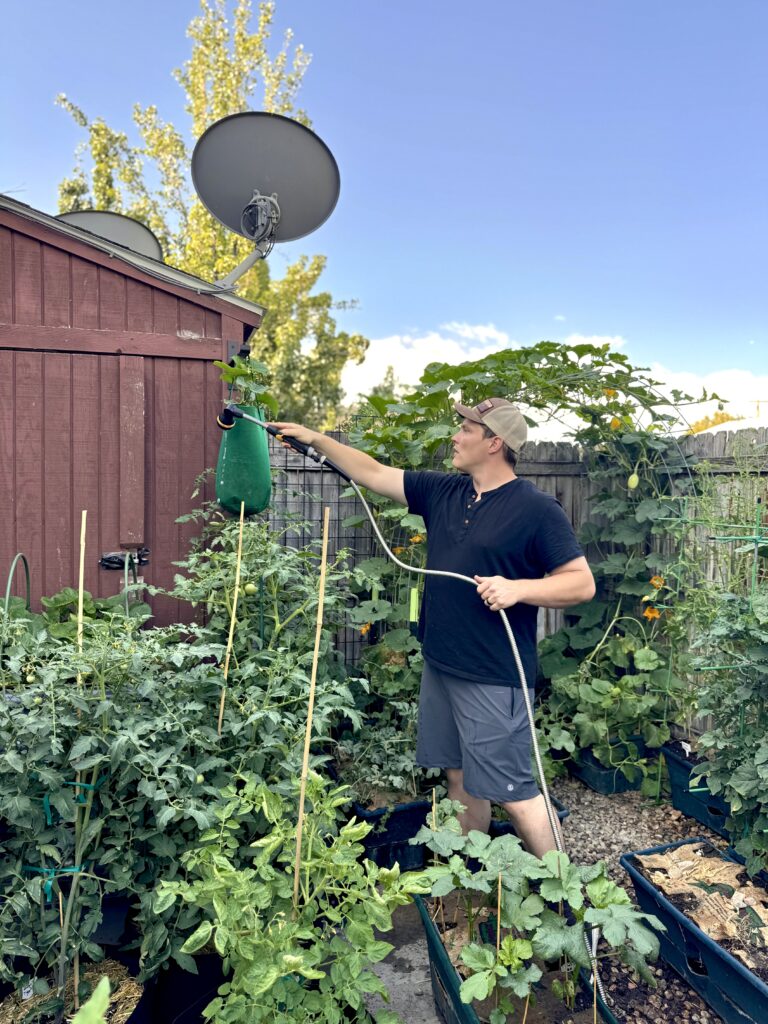
Why Homegrown Often Wins
Fruits and vegetables grown at home tend to be more nutritious, flavorful, and fresh compared to those bought at the store. The largest gaps appear in tomatoes, leafy greens, berries, carrots, bell peppers, cucumbers, melons, eggplants, and potatoes.
These differences mainly come from harvest timing, variety selection, and post-harvest handling. Store produce is bred and managed for shelf life and appearance, while homegrown crops are usually fresher, ripened naturally, and grown in richer soil.
Homegrown produce often performs better because:
- Fruits and vegetables grown at home are picked at peak ripeness, maximizing vitamins and antioxidants. Store produce is often picked early to survive shipping.
- Nutrients decline over time. By the time store produce reaches your plate, it may have lost much of its vitamin C and folate.
- Gardeners tend to grow heirloom and flavorful varieties that are richer in nutrients, while commercial growers prioritize durability and uniformity.
- Home gardens usually have nutrient-rich soil enriched with compost, improving mineral uptake compared to industrial farms.
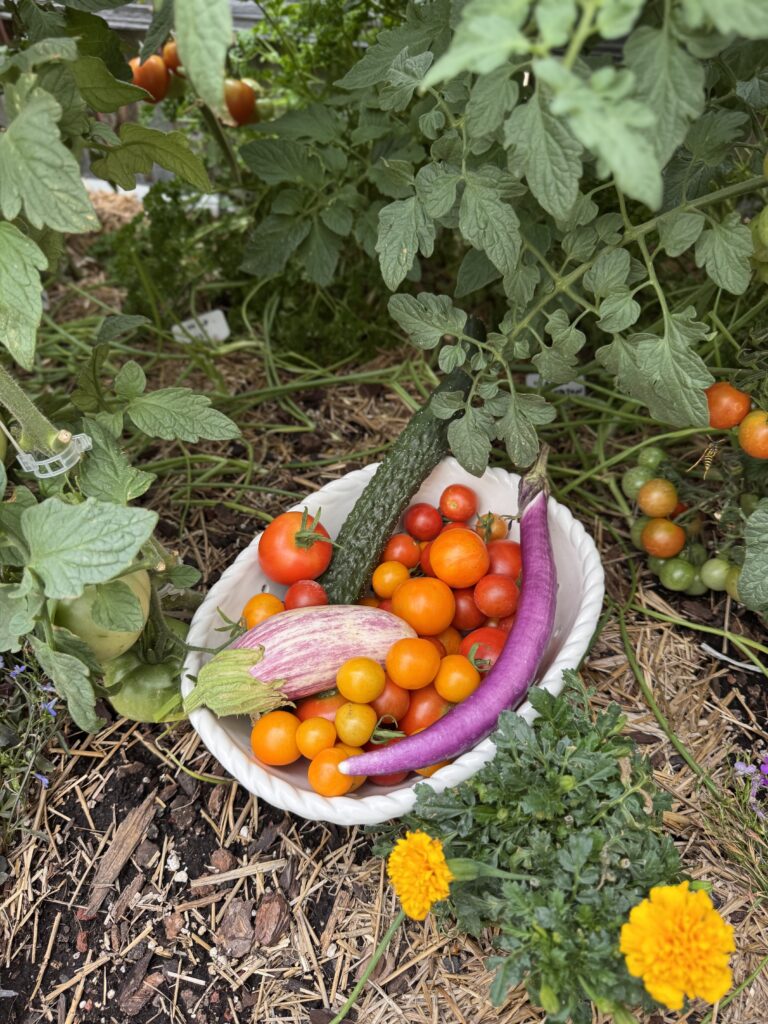
Crops with the Starkest Differences
Tomatoes
- Homegrown Advantage: Homegrown tomatoes are richer in lycopene and vitamin C. They ripen fully on the vine and offer superior flavor and nutrition. I’ve met many people who grew up thinking they didn’t like tomatoes until they tried a homegrown one!
- Store-Bought Issue: Store tomatoes are usually picked green and ripened artificially. They’re bred for firmness and durability during shipping, resulting in pale, watery fruit with fewer antioxidants.
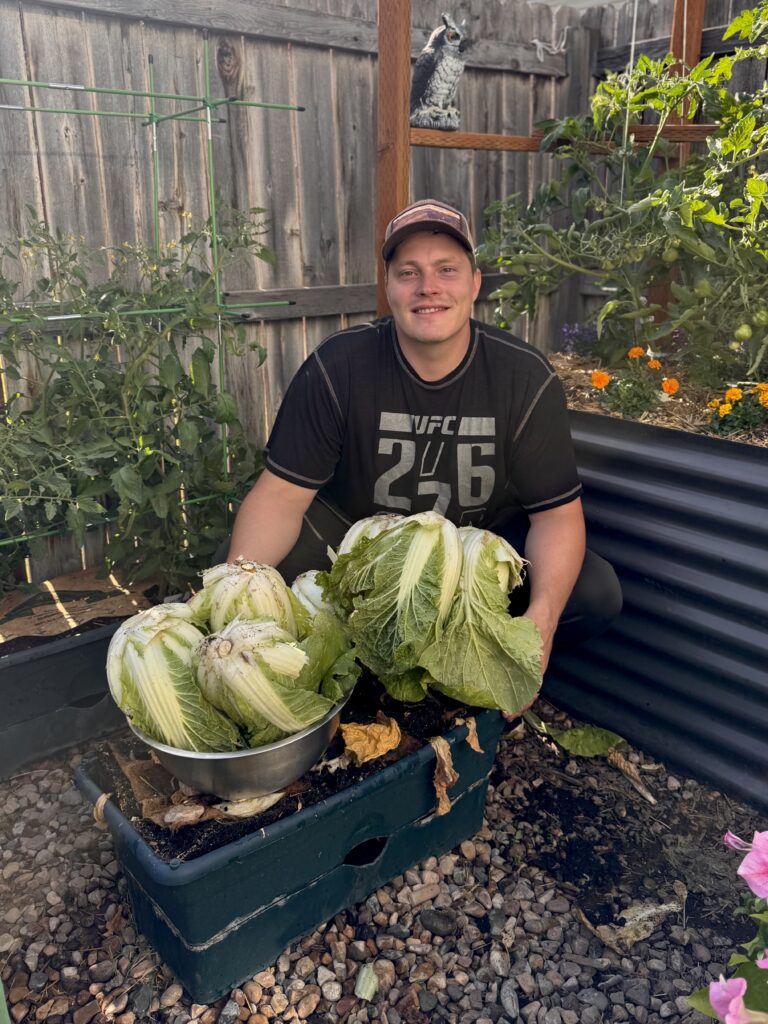
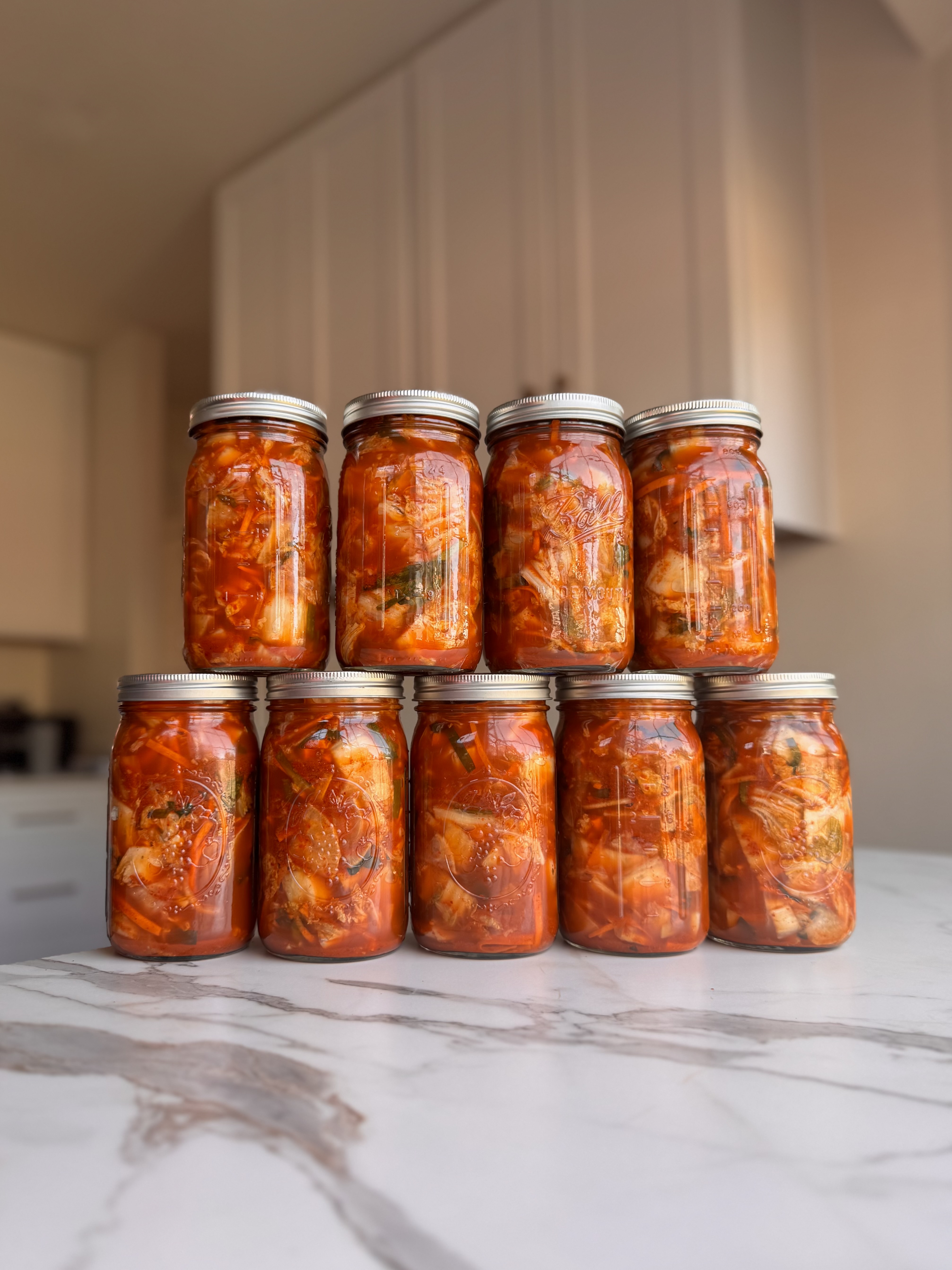
Leafy Greens
- Homegrown Advantage: Greens grown in the garden have higher vitamin C, folate, and antioxidants. Eating them fresh preserves most of their nutrients.
- Store-Bought Issue: Store-bought greens may have been harvested days or weeks earlier, leading to rapid nutrient loss. For example, spinach can lose over half its folate within a week.
Berries
- Homegrown Advantage: Homegrown berries ripen fully on the plant and are eaten quickly, preserving vitamin C and antioxidants. Growing up, we’d grow and harvest raspberries all the time, then make our own homemade jam!
- Store-Bought Issue: Commercial berries are often picked before full ripeness to reduce spoilage. They are also washed or treated, which lowers antioxidant content.
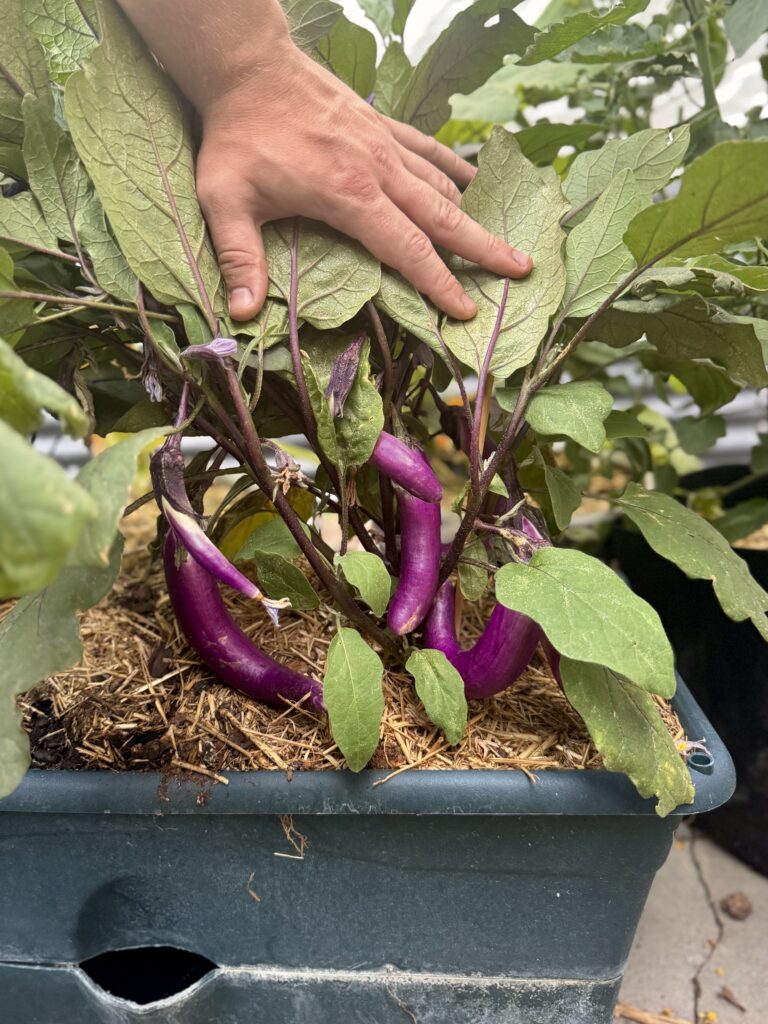
Chinese String

Choryoku
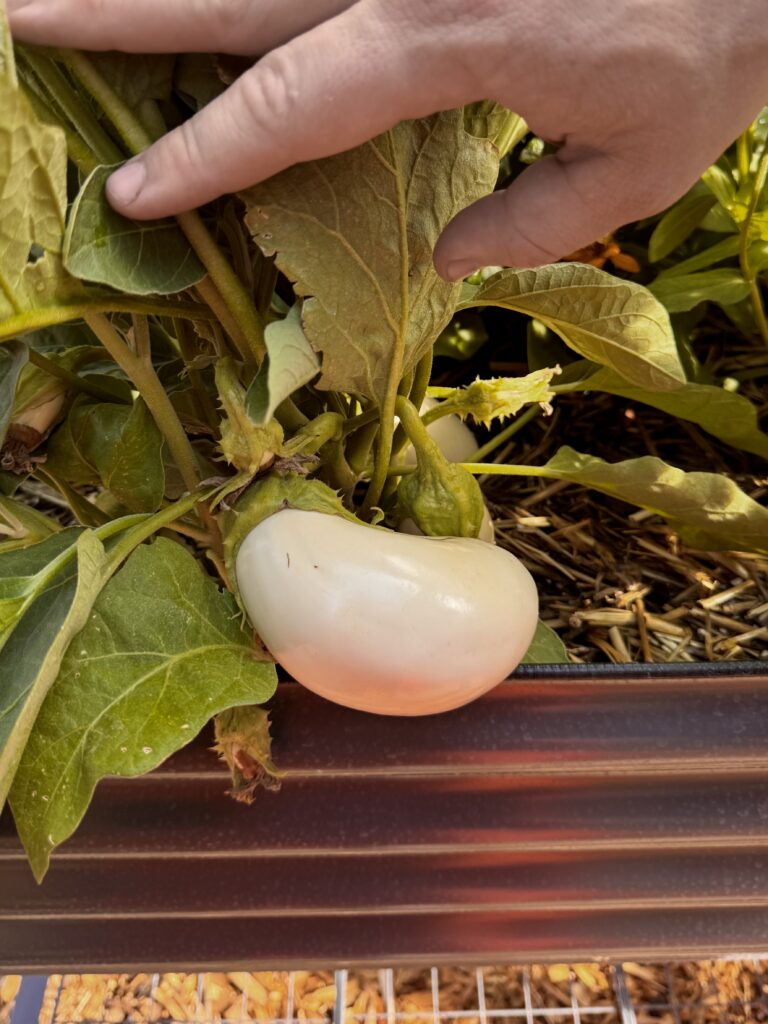
White Eggplant
Eggplants
- Homegrown Advantage: Garden eggplants often have richer, more complex flavors and better texture. Additionally, in the U.S. (and many other places), the selection of eggplant varieties is quite limited. You’ll usually only find the common large purple kind. Personally, I find this to be one of the less appealing options compared to the many other varieties out there!
- Store-Bought Issue: Commercial eggplants may be picked early and stored longer, which can reduce flavor quality.
Carrots
- Homegrown Advantage: Garden carrots often have deeper color, sweeter flavor, and higher carotenoid levels, especially in heirloom varieties.
- Store-Bought Issue: Store carrots are grown for size and uniformity rather than nutrition. This results in lower beta-carotene levels and a blander taste.
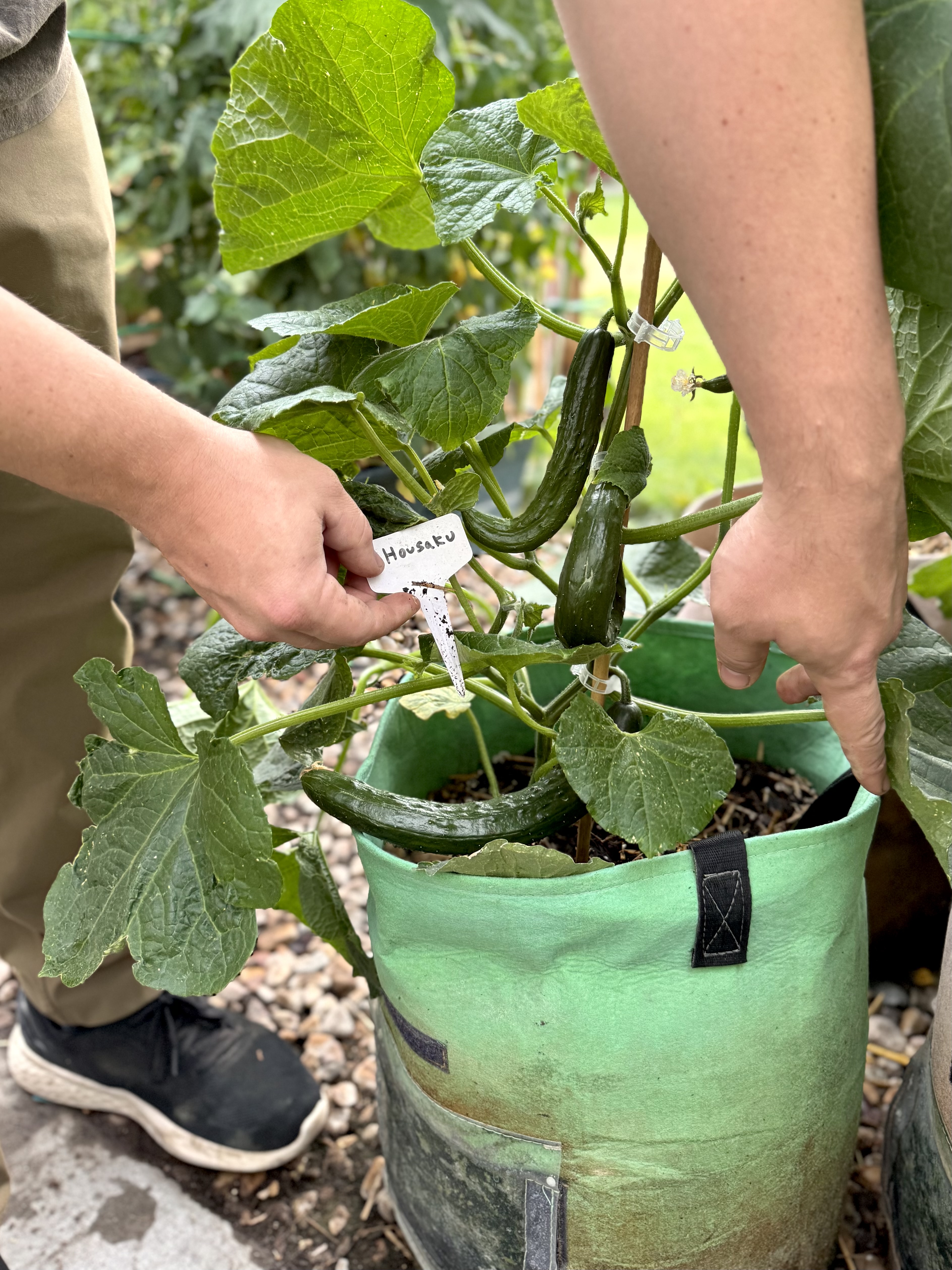
Cucumbers
- Homegrown Advantage: Garden cucumbers offer crisp texture, better flavor, and more antioxidants, especially when eaten fresh.
- Store-Bought Issue: Early harvest and long storage cause store cucumbers to be watery and less nutritious.
Bell Peppers
- Homegrown Advantage: Homegrown bell peppers are sweeter and richer in vitamin C and carotenoids, especially when harvested fully ripe.
- Store-Bought Issue: Commercial peppers are picked early to prevent bruising, leading to lower sugar content and reduced vitamins.
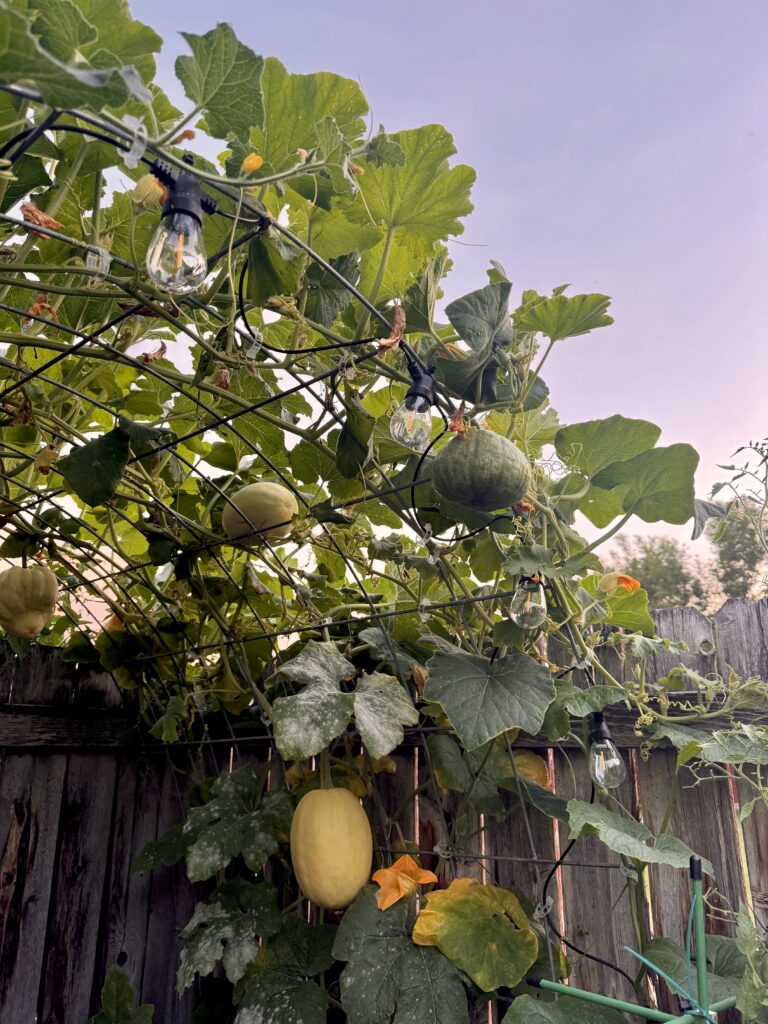
Melons
- Homegrown Advantage: Melons grown in home gardens or local farms often have a much wider range of flavors and are significantly sweeter. Their sweetness and aroma develop fully when allowed to ripen naturally on the vine.
- Store-Bought Issue: Most store-bought melons are picked early and transported long distances, often resulting in bland fruit with muted sweetness and aroma.
Potatoes
- Homegrown Advantage: Homegrown potatoes often have a softer, creamier texture and a richer, more robust flavor. And they’re so easy to grow! Very low effort.
- Store-Bought Issue: Store potatoes can sometimes be firmer or mealy with less vibrant taste due to storage conditions and variety choices.
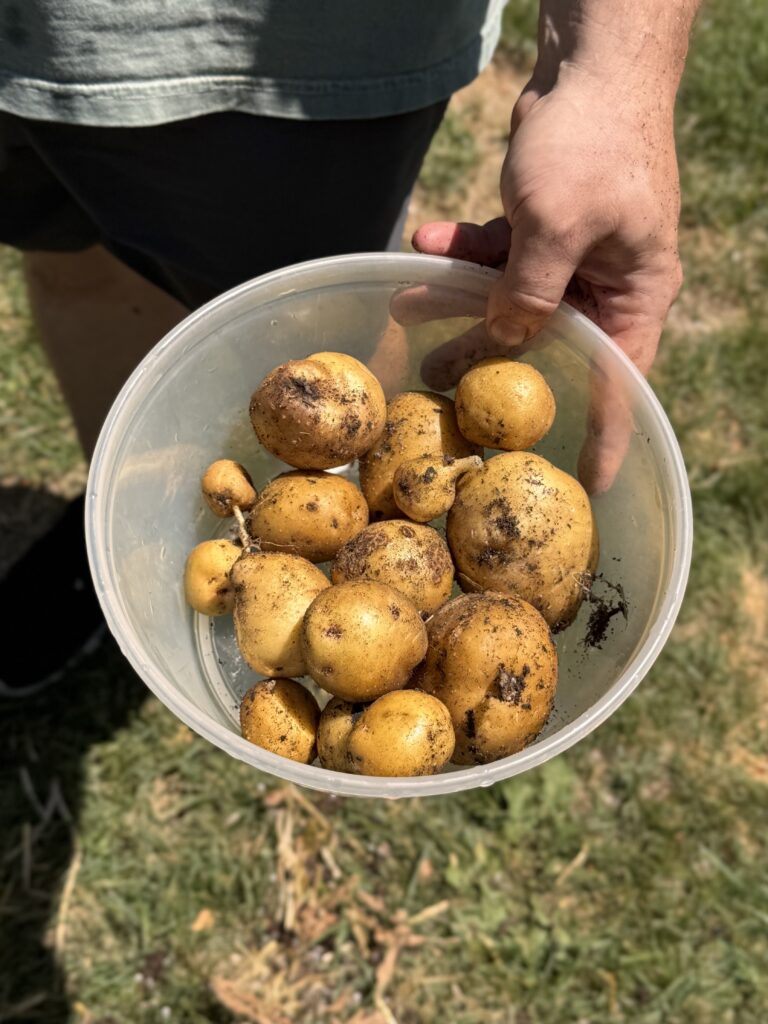
Why Store Produce Loses Nutrients
- Early Harvesting: Many important nutrients, such as vitamin C and lycopene, increase significantly during the final ripening stages. When fruits and vegetables are picked before they fully ripen, this natural nutrient development is interrupted. Although artificial ripening techniques can change the color of produce, they cannot replicate the complex internal processes that build flavor and nutrition.
- Storage and Transport: Nutritional decline begins immediately after harvest. Produce often spends days or even weeks in transit and on store shelves. During this time, sensitive nutrients like vitamin C, folate, and antioxidants degrade steadily, even when refrigerated. Prolonged storage can reduce nutrient levels by more than half in some cases.
- Handling and Processing: Steps such as washing, cutting, and packaging expose produce to oxygen, light, and moisture. These factors accelerate the breakdown of vitamins and antioxidants. Even minor bruising or damage triggers enzymatic reactions that further degrade nutrients, especially in delicate crops like leafy greens and berries.

- Chemical Treatments: To extend shelf life and maintain appearance, commercial produce may undergo treatments like irradiation, wax coatings, and chlorine washes. While these methods help reduce spoilage, they can also diminish surface nutrients and remove beneficial plant compounds. Some coatings may also interfere with the natural ripening chemistry.
- Variety Selection: Commercial growers often choose varieties bred for durability, high yield, and long shelf life rather than flavor or nutrition. For example, many store tomatoes carry a mutation for uniform ripening that lowers sugar and antioxidant content. By contrast, heirloom and specialty varieties typically offer richer taste and higher nutrient levels.
- Soil Quality and Growing Practices: Industrial farming practices, including monoculture and heavy use of synthetic fertilizers, can degrade soil quality over time. This results in crops that absorb fewer essential minerals such as magnesium, zinc, and iron. Home gardens, by contrast, often employ composting, mulching, and crop rotation to maintain nutrient-rich soil, leading to more nutrient-dense produce.
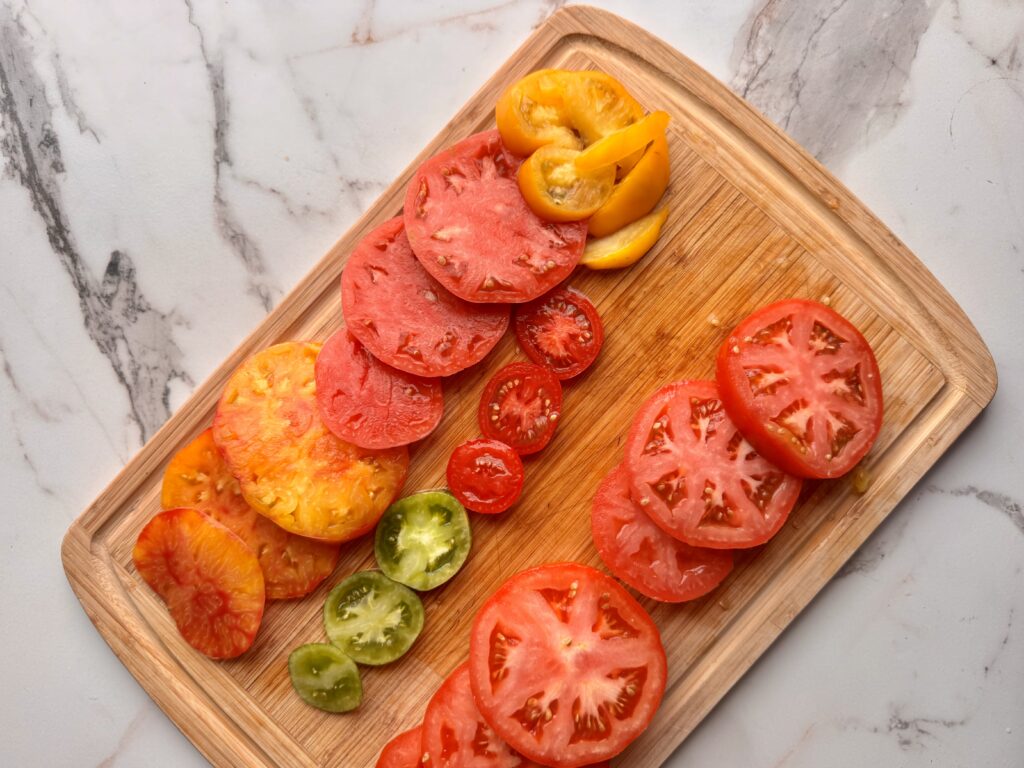
Nutrient Differences Between Homegrown and Store-Bought Produce
Many studies and observations reveal that homegrown fruits and vegetables generally have higher levels of certain vitamins and nutrients compared to their store-bought counterparts. Here are the most notable:
- Vitamin C: This nutrient is especially sensitive to heat, light, and the time elapsed after harvest. Garden-fresh produce picked at peak ripeness preserves far more of it than store-bought, which can lose substantial amounts due to early harvesting and prolonged storage. It plays a crucial role in immune defense, skin maintenance, and antioxidant protection.
- Antioxidants (Including Lycopene, Beta-Carotene, and Flavonoids): Shield the body from oxidative stress and inflammation. Tomatoes, carrots, bell peppers, and berries from a home garden generally offer higher levels of lycopene, beta-carotene, and flavonoids – nutrients that degrade significantly with time and premature harvesting.
- Folate (Vitamin B9): Essential for DNA synthesis and cellular development, this vitamin diminishes quickly after harvest. Homegrown leafy greens like spinach and kale typically retain more folate because people eat them fresher and avoid long transport or storage times.
- Vitamin A: Derived from carotenoids such as beta-carotene, this vitamin supports vision, immune strength, and skin health. Deeper color and immediate harvest in homegrown carrots and peppers often reflect higher vitamin A content.
- Minerals (Magnesium, Zinc, Iron): Soil health plays a major role in the mineral content of produce. Vegetables grown in well-maintained home gardens usually contain more essential minerals, while those from conventional farms with depleted soils may offer less nutritional value.
- Vitamin K: Found mainly in leafy greens, vitamin K is important for blood clotting and bone health. Homegrown greens tend to have higher vitamin K levels due to freshness and soil nutrient availability.
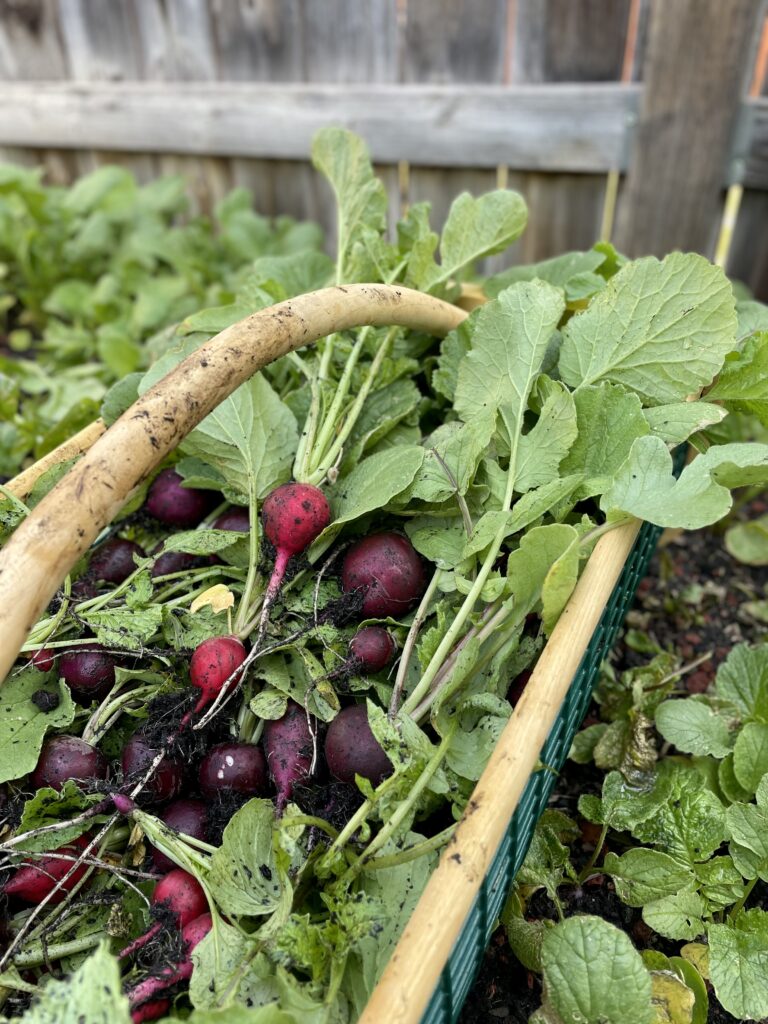
Frozen Produce: Nutritious & Budget-Friendly
Not all store-bought produce lacks nutrition or flavor, but homegrown fruits and vegetables (especially tomatoes, leafy greens, berries, carrots, bell peppers, cucumbers, melons, eggplants, and potatoes) offer better freshness, flavor, and nutrients. Growing your own or buying from local farmers who prioritize quality is the best way to enjoy peak nutrition.
Buying frozen fruits and vegetables is an excellent alternative to fresh produce, especially when it comes to convenience and nutrition. Frozen produce is typically harvested at peak ripeness (when it’s most flavorful and nutrient-dense) and then flash-frozen shortly after to lock in its vitamins and minerals.
This process helps preserve their nutritional value far better than fresh produce that may sit on shelves or in your fridge for days or even weeks before being eaten. It’s also a more affordable option year-round and helps reduce food waste, since you can use only what you need and keep the rest frozen.
Thanks for reading along, guys! If you enjoyed this blog post, check out my other gardening blog posts:
- How to Start a Garden on a Budget for Under $100
- Essential and Nice-to-Have Garden Products for Your Perfect Setup
- My Garden Setup: 3 Best Garden Containers for Every Gardener
- Understanding Garden Light and Shade: A Simple Guide
- How to Build a Homemade Trellis Using Cattle Panel
Follow me on social media for daily content and instructional videos about gardening!





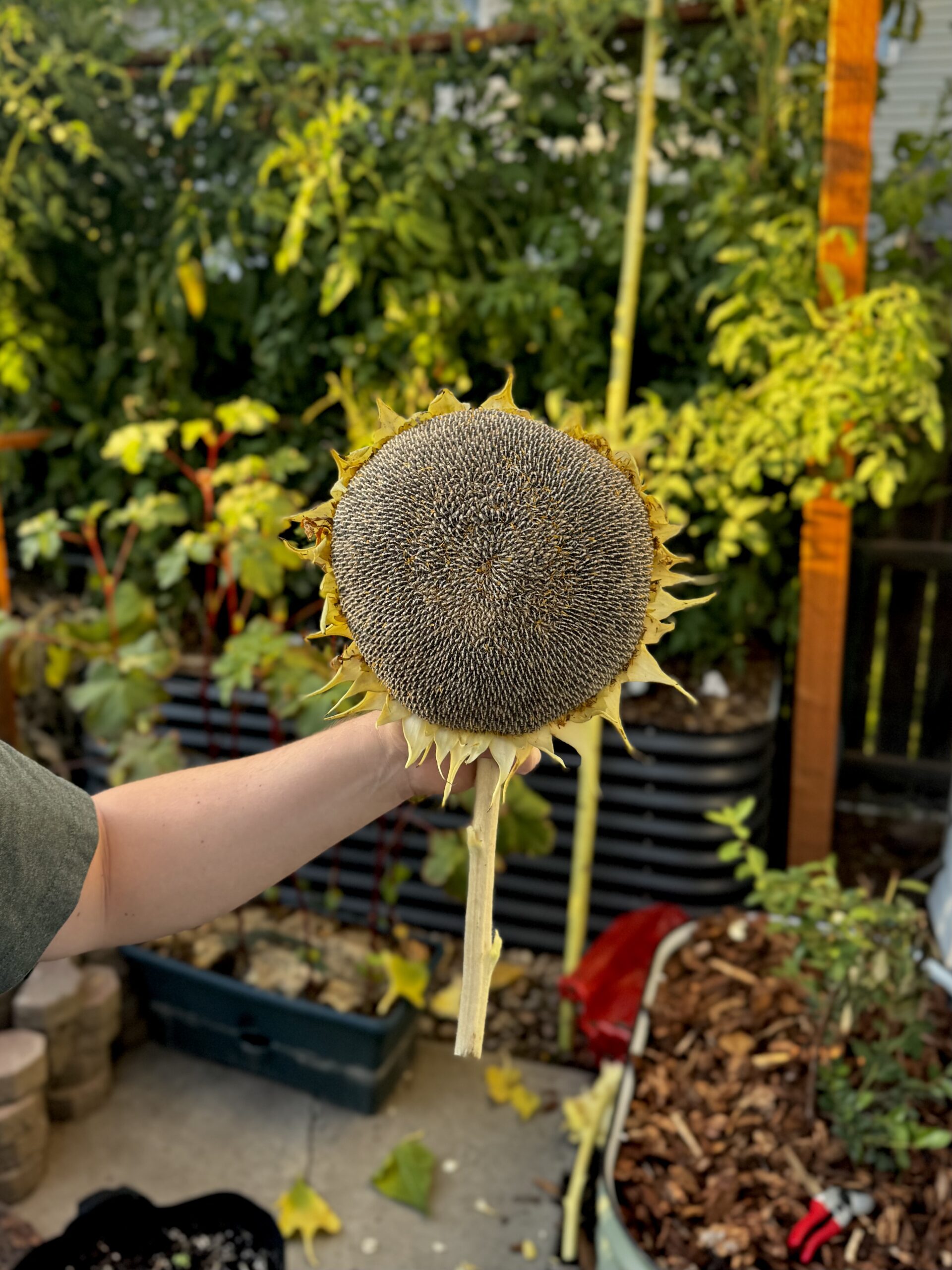


0 Comments